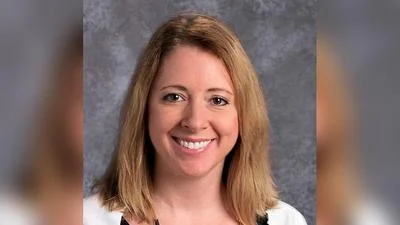Business | Pexels by fauxels
Business | Pexels by fauxels
AMES, IA — On the Upper Mississippi River, a system of locks and dams keeps the artery between Minneapolis and St. Louis open and the U.S. economy pumping. Barges haul around 175 million tons of freight, including 60% of the country’s grain exports, across the waterway each year.
But decades of use, freeze-and-thaw cycles and floods have taken a toll on infrastructure 30 years past its life expectancy. Shutdowns for maintenance and repairs have increased, causing more delays and bottlenecks for shippers.
Yoshinori Suzuki is a transportation expert and the Land O’Lakes Endowed Professor of Supply Chain Management at Iowa State University. His latest research proposes a new funding model for a major rehabilitation of the 27 locks and dams on the Upper Mississippi. It relies on a collective investment from all – or at least most – of the shippers, along with government funding. Suzuki’s findings indicate the public-private partnership would pay off in the long-run.
In his newly published paper in Transportation Journal, Suzuki pointed to another study that analyzed U.S. Army Corps of Engineers data. It showed the percent of delayed vessels jumped from 35% in 2010 to 49% in 2017.
“These delays are a huge cost for shippers. They either have to wait until the problem is fixed, which could be hours or days, or unload their cargo onto trains or trucks, which are more expensive alternatives,” said Suzuki. “When shippers can use them, barges are the most economical mode of transportation.”
According to the Iowa Department of Transportation, a typical inland barge can haul 1,750 tons. Moving the same volume requires 16 rail cars or 70 large semi-trailers. Previous research shows barges use less fuel to move a ton of cargo a mile.
But without a major rehabilitation of the Upper Mississippi, Suzuki said the frequency of delays and reliance on rail and trucks will continue to increase. Higher transportation costs could be passed on to producers and consumers.
“The stakeholders all recognize the need for a major upgrade to the infrastructure on the Upper Mississippi. The challenge has been figuring out how to pay for it all,” said Suzuki.
The U.S. Army Corps of Engineers and Iowa DOT estimate a price tag exceeding $1 billion. The Bipartisan Infrastructure Law enacted in 2021 allots money for inland waterways. However, Suzuki emphasized there are many locks and dams in the U.S. that need improvements. It’s unlikely the federal funding will be enough for all of the Upper Mississippi infrastructure.
Private funding could fill the gap, said Suzuki.
Finding the sweet spot
“Theoretically, shippers should be willing to pay up to the amount that equals the financial damage from delays and disruptions with the current state of the locks and dams,” said Suzuki. “If their goal is to maximize investment returns, there should be a sweet spot for investing in improvements.”
Suzuki said finding this sweet spot required answers to two questions: What financial costs are shippers incurring with the current system? How much do those financial costs decrease when the system becomes more reliable?
He developed a theoretical math formula and model using data from the Iowa DOT and U.S. Army Corps of Engineers, and interviews with three shippers and a third-party logistics provider. Suzuki then ran simulations of Upper Mississippi traffic flows through 27 different scenarios.
"My calculations show that if shippers paid for 60%-80% of the rehabilitation project, the investment return they would get from saved costs would be maximized. It would double or triple in 20-40 years," said Suzuki, adding that it would be equivalent to investing with a 3%-5% annual interest rate.
Suzuki’s findings indicate the payback period can be eight years or less, but he said the time frame could be longer if the shippers needed to borrow money to pay for the infrastructure project. He added that, unlike some other proposals, his funding model would not include user fees or tolls at locks and dams, which would require changes to federal regulations.
Beyond the math
Suzuki’s model displays an elegant solution. But he acknowledges putting it into practice comes with additional hurdles.
“Ideally, everyone who uses the waterway should be investing. In practice, convincing all of them may be a challenge and will require a lot of outreach to explain how this would benefit them in the long run,” he said.
Suzuki said it may be necessary to establish a single point of contact to pull together funding and represent all of the shippers when working with state and federal agencies. This could take the form of a nonprofit member cooperative. Another option would be hiring a third-party financial firm.
Since large shippers would benefit more from the rehabilitation project, Suzuki said the participating firms would need to agree on a way to split the investment costs equitably. They may also want to work with federal or state governments to create tax incentives to boost participation and prevent free-riders.
Suzuki’s research was funded by Supply Chain Innovation Forum of Debbie and Jerry Ivy College of Business at Iowa State.
Original source can be found here.


 Alerts Sign-up
Alerts Sign-up